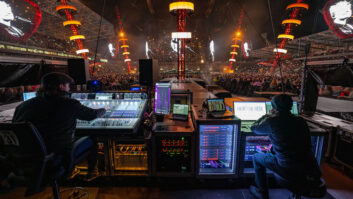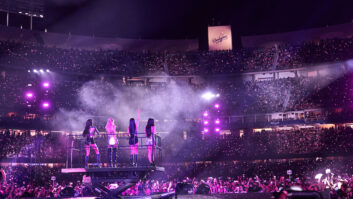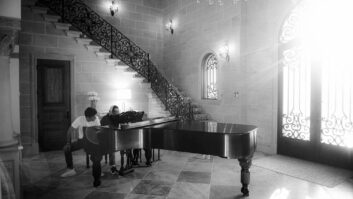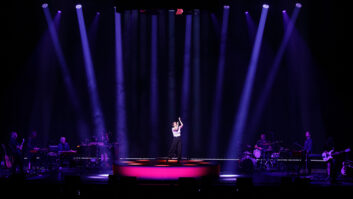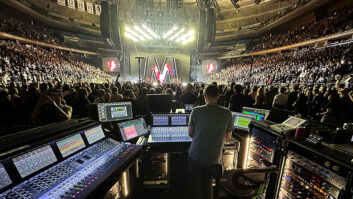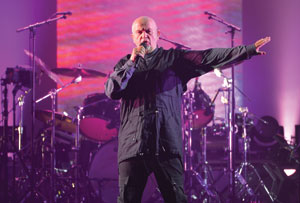
Photo: Steve Jennings
In fall 2012, Peter Gabriel celebrated the 25th anniversary of the release of his multi-Platinum album So (actually released in 1986) by embarking on a brief North American tour comprising 13 stops. For this tour, dubbed Back to Front, Gabriel reassembled his original touring band for So: Manu Katché (drums), Tony Levin (bass), David Rhodes (guitar) and David Sancious (keyboard), as well as Jennie Abrahamson (vocals/background vocals) and Linnea Olsson (background vocals).
Mix caught the show in October at the HP Pavilion in San Jose, Calif., where fans were treated to three sets that included Gabriel’s earlier solo hits and culminated in the So album live. The band’s energetic and dynamic performances were captured for the audience by veteran front-of-house engineer Ben Findlay, who began his audio career working in Gabriel’s Real World Studios in Bath, England, and monitor engineer Damon Miller, who has had Gabriel as a client since 2004.

FOH engineer Ben Findlay
Photo: Steve Jennings
The Back to Front tour carried all of its own production. Findlay stands behind a 96-input Avid Profile D-Show console, using a combination of native processing, plug-ins and outboard gear. “The ability to do virtual soundchecks gives you a massive advantage,” he says. “You get to hear all the band parts at show intensity, which you never get from an attended soundcheck. You can make the snapshot starting point razor sharp, so that each entry is at exactly the right level. The primary objective is to make all contributions made by the band as intelligible as possible, so if you see something happening on the stage or screens, you hear it. The vocals must be clear and understandable, but should not dominate the band.”
“I work with a combination of native processing, plug-ins, and outboard processing,” Findlay continues. “For the [drum] kit I use the native EQ and dynamics, but then I will group all of the kit channels and process the group, with the group process settings locked to to the current song’s snapshot. I ended up with a lot of parameter changes on individual drum channels in order to let the toms breathe where necessary, or EQ’ing the snare differently from song to song. I always try to keep things as simple as possible.
“I used two outboard reverbs: A Bricasti M1 for general [vocal] reverb duty; the second unit was a Quantec Yardstick [Room Simulator], which I used for very long reverb decay times.”

Monitor engineer Damon Miller
Photo: Steve Jennings
Miller at monitors is on a Yamaha PM5D. “There are three sections to the show [acoustic, electronic, and the So album], so I had to run the desk in scenes and all sections required a very different mix,” he explains. “I had six musicians to look after, and they were quite specific about their needs.” Band members were on Sennheiser 2000 IEM systems, except for Sancious, who used floor monitors provided by Firehouse Productions. Vocal mics were all Audix OM6s.
The P.A. was an L-Acoustics K1 line array overseen by Firehouse Productions’ Jamie Pollock, who Findlay says is “one of the world’s best system techs.” The main hang comprised 16 K1 elements per side, with an underhang of six Kara downfills per side, eight flown SB28 subs, and eight ground-stacked SB28 subs. The side-hang comprised eight K1 elements and six KARA underhang. Front-fills were KIVA, dV-DOSC and ARCS, arranged as needed. “It was like mixing with a mastering engineer [sitting] beside you through a huge pair of studio monitors, in a big clang-y room,” Findlay says. “That was a very good place to start.”

